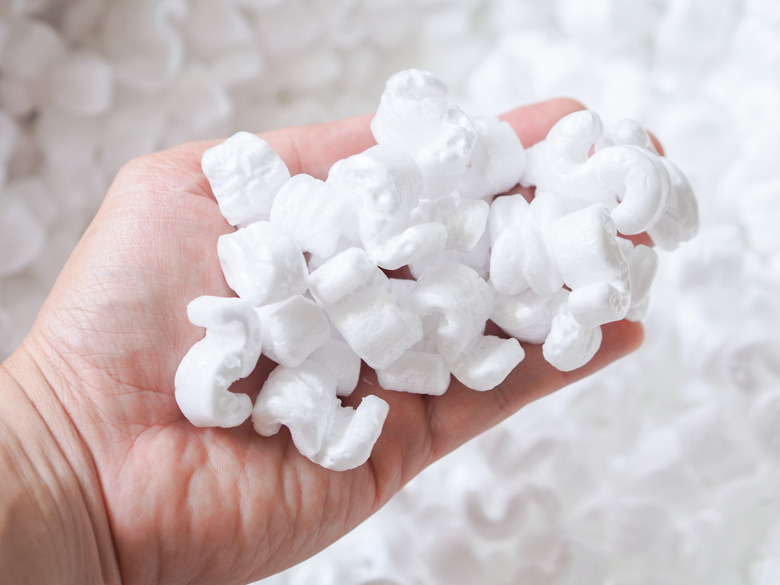Acetone And Styrofoam Experiment
If you have ever wanted to make something vanish as if by magic, all you need is acetone and Styrofoam. While Styrofoam does not decompose quickly or easily, acetone makes it seem to disappear in seconds. This is because acetone is a solvent that breaks down Styrofoam.
TL;DR (Too Long; Didn't Read)
An experiment with acetone, Styrofoam and a glass bowl or measuring cup shows how much air is in Styrofoam and has pretty magical results. Basically, it looks like a huge amount of material is dissolving in a small amount of liquid.
Properties of Styrofoam
Properties of Styrofoam
Styrofoam is actually a trade name, used generically to describe polystyrene foam, a polymer made of a long chain of molecules. It is injected with gases during the manufacturing process and becomes extremely lightweight, with about 95 percent air. Styrofoam often makes up drink holders and insulating materials, as it is a poor conductor of heat.
Properties of Acetone
Properties of Acetone
Acetone is an organic compound with the formula (CH3)2CO. A colorless, flammable solvent, it mixes easily with water and evaporates quickly in air. It is popular in plastics manufacturing, industrial cleaning products and some household liquids, such as nail polish remover.
Styrofoam Acetone Experiment
Styrofoam Acetone Experiment
To carry out an experiment with Styrofoam and acetone, all you need is a large bowl or measuring glass. Pour the acetone into the container, then slowly add pieces of Styrofoam. You can use a large piece of Styrofoam, Styrofoam beads or even a Styrofoam cup. Another way of doing this is to pour acetone directly onto a piece of Styrofoam.
Do the experiment in a fume hood or well-ventilated room, and wear safety glasses and gloves. Styrofoam dissolves in acetone in a similar way to how sugar dissolves in water. It is a physical rather than a chemical reaction. The air in the foam leaves, and because Styrofoam consists mainly of air, when it dissolves in acetone it completely loses its structure. The acetone splits up the long chain of molecules, and the air disappears, causing the volume to shrink radically.
The Styrofoam does not completely disappear, even though it looks like it has. Rather, the polystyrene molecules are actually present in the acetone solution. The reaction between Styrofoam and acetone shows how soluble this plastic is in an organic solvent and how much air is in Styrofoam. If you do not have acetone, you can use gasoline or just about any other organic solvent to easily dissolve Styrofoam.
Cite This Article
MLA
Gillespie, Claire. "Acetone And Styrofoam Experiment" sciencing.com, https://www.sciencing.com/acetone-styrofoam-experiment-2768/. 20 April 2018.
APA
Gillespie, Claire. (2018, April 20). Acetone And Styrofoam Experiment. sciencing.com. Retrieved from https://www.sciencing.com/acetone-styrofoam-experiment-2768/
Chicago
Gillespie, Claire. Acetone And Styrofoam Experiment last modified March 24, 2022. https://www.sciencing.com/acetone-styrofoam-experiment-2768/
